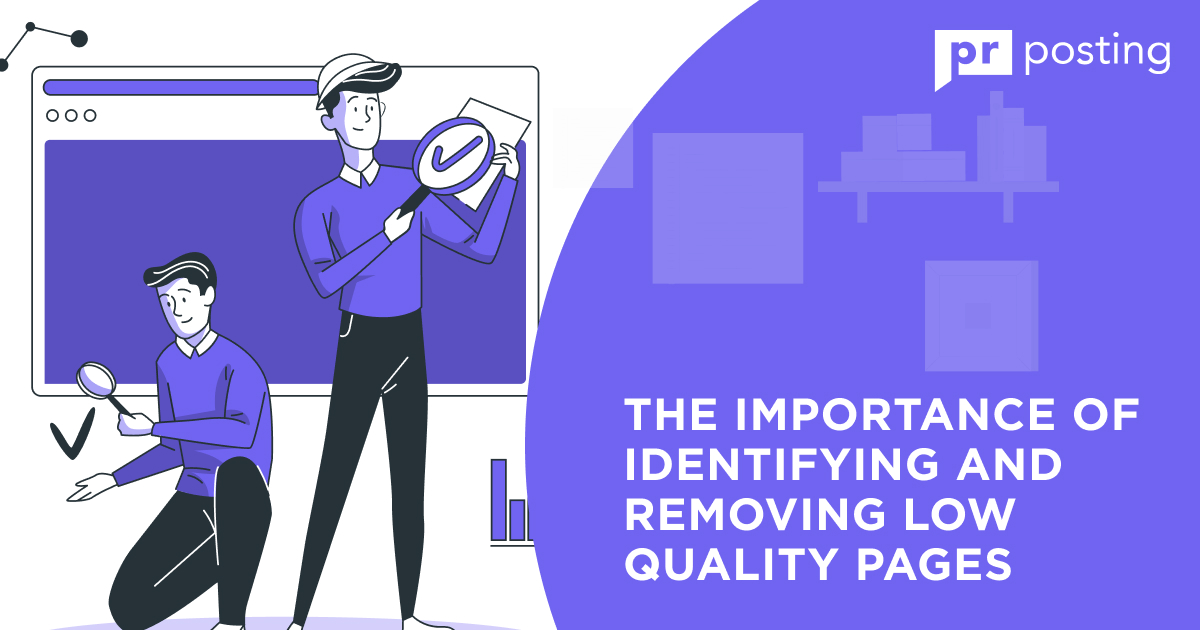Google Analytics for SEO in 2025: Features, Benefits, and Best Practices

Google Analytics for SEO lets you analyze user activity, optimize content, and track conversion success. By using detailed information, you enhance the relevance of your site and user satisfaction. This tool provides data on who is visiting your website, their origin, and interaction patterns. With this information, you can improve your pages to attract and retain more visitors. In 2025, mastering analytics means mastering competitive SEO.
Why Do You Need Google Analytics SEO Reports?
Measure Traffic and Engagement with SEO Metrics. Google Analytics offers precise data on user activity:
- Monitor Page views and unique visitors;
- Bounce rates and session durations;
- Conversion goals and form completions.
These metrics indicate content effectiveness and the quality of user engagement. Knowing how users interact with your site will help you achieve better results. Analyze high-performing pages to replicate their success.
Track Traffic Sources and User Paths
Understand where your visitors are coming from to tailor your marketing efforts:
- Organic search traffic;
- Social media referrals;
- Direct visits and paid campaigns.
Tracking users’ paths reveals how they navigate your content. Do they leave the pages quickly? Are they following your conversion path? Google Analytics SEO reports show this data, helping you optimize accordingly.
Benefits of SEO Data Analysis
With detailed Google Analytics SEO metrics, you can:
- Identify underperforming content and improve it;
- Discover top keywords that drive organic traffic;
- Identify pages with high bounce rates.
This data allows you to choose smarter opinions, making your site more relevant and engaging.
By integrating Google Analytics optimization techniques into your SEO strategy, you gain a competitive advantage. Track, analyze, and act on trusted data to build stronger, user-centric SEO. Effective SEO in 2025 depends on your ability to work with analytics to improve continuously.
How to Set Up Google Analytics for SEO
Proper setup is essential to gaining practicable insights and enhancing your SEO strategy. A structured process ensures accurate data collection, giving you better control over website performance. Follow these steps to optimize your Google Analytics setup for website tracking and start using data-driven results.
A Comprehensive Google Analytics Setup Checklist
The checklist keeps your setup thorough and organized. Consider the following steps:
- Create a Google Analytics account to begin tracking.
- Add your website and set up a data stream.
- Define the time zone and reporting currency directly.
- Enable advanced measurement to track user interactions.
- Set up IP filters to exclude internal traffic.
- Activate data retention settings for long-term analysis.
Following this Google Analytics setup checklist will ensure you collect reliable data from the start.
Complete Your Google Analytics Setup for Website Tracking
Accurate tracking is the foundation of meaningful analysis. Here’s how to get it right:
- Place the tracking code on every page of your website;
- Use Google Tag Manager to manage tags easily;
- Test the implementation with real-time reporting.
Verify tracking consistency by checking the accuracy of the session data. A completely configured tracking setup allows you to get Google Analytics SEO metrics such as bounce rate and session duration.
Learn How to Get Google Analytics Tracking ID
The tracking ID connects your website to Google Analytics, obtaining vital data. Here is how to find it:
- Log in to your Google Analytics account.
- Choose” Admin” from the bottom left menu.
- Under your website, click “Data Streams.”
- Copy the ID starting with ” G-.”
Insert this ID into your website’s header using a plugin or by pasting the code manually. This step is vital for accurate data flow and analysis.
Connect Google Search Console for SEO Insights
Google Search Console reveals keyword and indexing performance. Linking it to Analytics provides a deeper understanding of search behaviour.
Next, the connection process:
- Open Admin settings in Google Analytics.
- In the Properties Section, click “Set up the Search Console.”
- Add your verified Search Console site.
- Save changes to link the accounts.
Integrating these tools enriches your SEO reports with search visibility data. By setting up Google Analytics to track your website, you will get precise, actionable data to improve your SEO outcomes. Regular reviews and updates keep your analytics strategy relevant and impactful.
Using Google Analytics for SEO Optimization
Google Analytics provides essential insights for refining SEO strategies. Analyzing crucial data will help you enhance user experience and improve rankings. Use Google Analytics SEO reports to make data-driven changes that boost performance.
Analyze Google Analytics SEO Reports for Actionable Data
Reports provide comprehensive data on website activity. Focus on:
- The most effective pages by traffic volume;
- High-yield pages that influence conversions;
- Search queries that generate the most impressions.
With practicable insights, you can fine-tune content for better results.
Identify Content with Declining Traffic Using SEO Metrics
Spot traffic drops by examining page performance trends. To detect issues:
- Access Behavior> Site Content> Landing Pages.
- Compare date ranges to identify changes in traffic.
- Use literal data to pinpoint implicit causes.
React quickly to optimize crashing pages.
Improve Page Engagement with Google Analytics Features and Benefits
Engagement metrics show how users interact with your site:
- Analyze average session duration to determine user interest;
- Bounce rates to spot engagement drift;
- Scroll depth to understand the content coverage.
Implement layout and content improvements to keep your visitors engaged.
Boost Conversion Rates on High-Traffic Pages
Popular pages offer conversion potential. Improve performance by:
- Adding clear calls-to-action (CTAs);
- Optimizing navigation to reduce clutter;
- Using heat maps to observe user behaviour.
Small changes on top pages lead to significant SEO improvements.
Discover Keyword Opportunities with SEO Reports
Google Analytics combined with Search Console reveals keyword gaps. Use it to:
- Identify queries with high impressions but low clicks;
- Optimize content targeting underperforming keywords;
- Create new pages for unused search terms.
Keyword insights help you create more targeted content.
How to Understand Google Analytics SEO Metrics
Understanding the metrics is crucial to effective SEO. Use data to estimate performance and refine strategies.
How many visitors will I get to my website?
Find visitor data under Audience> Overview. Look at:
- Sessions for total visits;
- New and returning visitors;
- Geographic location data.
This data reveals audience behaviour patterns.
Which Channels Attract the Website’s Traffic?
Traffic source reports show the effectiveness of referrals. Analyze:
- Organic search traffic for SEO results;
- Social media referrals for engagement;
- Paid search performance for ROI.
Refine your marketing strategies based on channel data.
What Do Visitors Do on My Site?
Behavior Flow reports show user actions. Discover:
- Entry points that attract users;
- Pages with the highest exit rates;
- CTAs that drive conversions.
Comprehensive Google Analytics SEO metrics turn data into practicable improvements.
Viewing SEO Optimization Results with Google Analytics
Tracking SEO results requires careful analysis of the data. Use Google Analytics SEO reports to measure performance and refine strategies based on real-time metrics.
Use Google Analytics SEO Reports to track performance. SEO reports offer detailed information about traffic and user behaviour. Focus on the following elements:
- Organic search traffic volume;
- Conversion rates on landing pages;
- Top exit pages that impact user retention.
These reports reveal trends that impact your website’s visibility and ranking. Regular review helps maintain a competitive edge.
Refined Strategies with Data-Driven Insights
Data-driven analytics helps you make smarter decisions. Improve your SEO strategy by:
- Analyzing high-bounce rate pages to reduce exits;
- Identifying content that attracts attention to replicate success;
- Using heat maps to observe user interaction patterns.
Aligning decisions with data increases traffic and engagement potential.
Challenges of Using Google Analytics for SEO in 2025
Evolving technologies and regulations pose new challenges for SEO professionals. Understanding these issues helps you adapt to changes in Google Analytics features and benefits.
Adapting to New Google Analytics Features
New updates make it more difficult to interpret your data. Stay current by:
- Learning how new reports structure user activity;
- Exploring analytics to forecast trends;
- Navigating event-based tracking to replace traditional metrics.
Master new tools to increase your results in SEO optimization with Google Analytics.
Privacy Regulations and Data Tracking Changes
Privacy laws are changing how we collect and store data. Comply with them by:
- Checking GDPR and CCPA requirements for data privacy;
- Using consent platforms to obtain user permissions;
- Implementing server-side to maintain data accuracy.
These practices ensure ethical tracking while maintaining analytical sensitivity.
Effective SEO in 2025 depends on interpreting Google Analytics SEO reports and overcoming specialized barriers. By refining strategies with practicable data and staying on top of evolving features, you can strengthen your optimization efforts. Adaptation and nonstop learning are the keys to long-term success in search visibility.
Best Practices for SEO Optimization in Google Analytics
SEO success depends on strategic data analysis and responsive action. Implement these practices to completely utilize Google Analytics SEO reports and optimize your website performance. Focus on Behavioral Insights and User Intent.
Behavioral data shows how users interact with your content. Understanding user intent leads to more effective optimization decisions. Track these crucial metrics:
- Session duration to assess how long visitors stay engaged;
- Scroll depth to see how far users read your content;
- Navigation paths to identify common exit points.
Use this data to upgrade content, perfect structure, and better align with emerging prospects. Creating engaging pages that match intent keeps visitors longer and reduces bounce rates.
Combine Google Analytics with Other SEO Tools
While Google Analytics offers a solid foundation, integrating other tools broadens your approach. For maximum impact out of your search:
- Use Google Search Console to track keyword rankings and search performance;
- Apply heatmap tools to display user behaviour, including clicks and scrolling patterns;
- Run regular checks with SEO audit tools to detect specific issues that affect visibility.
These combinations help you better understand SEO challenges and opportunities. Data from various tools will also help you upgrade your strategy.
Review Google Analytics SEO Reports Regularly
Frequent analysis ensures your SEO approach adapts to changing trends. Prioritize these crucial reports:
- Behavioural Flow reports. Monitor how users navigate your site.
- Landing Page Performance. Analyze conversion performance on landing pages.
- Audience Demographics. Understand user profiles and improve targeting.
By scheduling regular reviews, you will stay on top of traffic changes, content engagement, and conversion trends. Nonstop monitoring allows you to respond to performance declines and capitalize on growth opportunities quickly.
Conclusion
The role of Google Analytics in SEO is continually developing. New features and smarter reporting tools offer greater precision in data-driven optimization. Using Google Analytics for SEO optimization means constantly learning to keep up with innovations. By applying best practices and integrating new tools, you can upgrade strategies, improve rankings, and provide a superior user experience. Stay curious, stay adaptive. SEO success is built on nonstop improvement and actionable data.
FAQs
How to monitor SEO with Google Analytics?
Review Google Analytics SEO reports to track keyword performance and user behaviour. Analyze organic search traffic using advanced filters and audience segmentation tools. Regular monitoring helps identify growth opportunities and fill content gaps.
What are the features of Google Analytics?
Key features and benefits of Google Analytics include event tracking and user flow analysis. New Google Analytics features offer predictive metrics and engagement tracking. They improve data accuracy and help you make smarter SEO decisions.
Where to find Google Analytics tracking ID?
Go to Google Analytics setup for the website and locate Data Streams. The proper setup ensures seamless tracking and accurate data collection.




